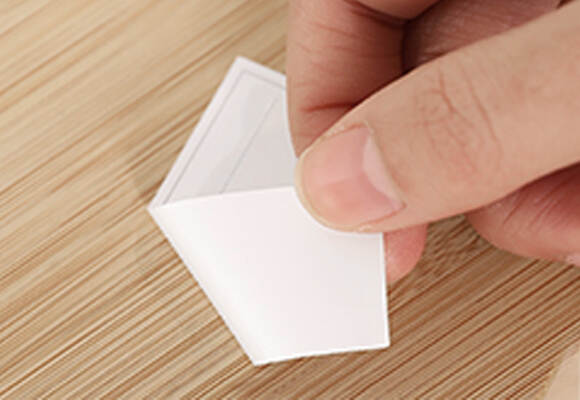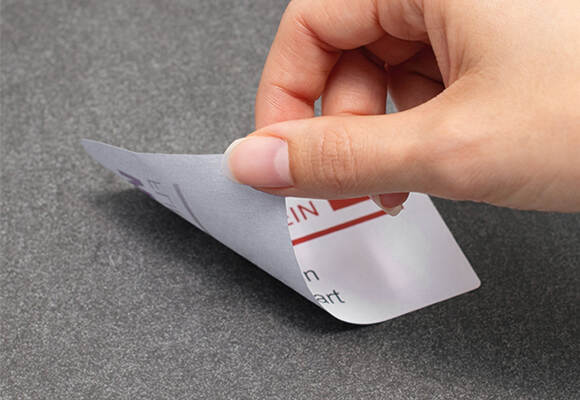Email cannot be empty
Password cannot be empty
Email format error
Email cannot be empty
Email already exists
6-20 characters(letters plus numbers only)
The password is inconsistent
Email format error
Email cannot be empty
Email does not exist
6-20 characters(letters plus numbers only)
The password is inconsistent


Waterproof Long-Term Removable Labels: Guide for Organization & Durability
If you’ve ever struggled with labels that fade, peel, or leave a sticky mess behind, you know the frustration. Whether you’re organizing your pantry, labeling tools in the garage, or keeping track of lab samples, waterproof long-term removable labels are a game-changer.
But not all labels are created equal. Some claim to be waterproof but smudge at the first splash. Others stick so well they’re impossible to remove without leaving residue. So, how do you find the perfect balance?
In this guide, we’ll break down everything you need to know about waterproof removable labels—what makes them durable, where to use them, and how to choose the best ones for your needs.
Why Waterproof Long-Term Removable Labels?
Let’s face it: regular paper labels just don’t cut it in real-world conditions. Moisture, heat, friction, and time can turn even the neatest labeling system into a smudged, unreadable mess.
Waterproof removable labels solve these problems by offering:
✅ Durability – Resistant to water, oils, and mild chemicals.
✅ Clean Removal – Peel off without sticky residue.
✅ Longevity – Stay legible for months or even years.
✅ Versatility – Work on glass, plastic, metal, and more.
Whether you’re a home organizer, a lab technician, or an outdoor enthusiast, these labels keep your items clearly marked—no matter the conditions.

Where Can You Use Them?
The beauty of waterproof removable labels is their adaptability. Here are some of the best use cases:
1. Kitchen & Pantry Organization
Ever grabbed the wrong spice because the label faded? Or struggled to read a soup can’s expiration date after condensation formed? Waterproof labels keep your kitchen organized, even in humid or frequently washed containers.
Great for:
-
Spice jars
-
Meal prep containers
-
Freezer bags
2. Office & School Supplies
From color-coded binders to shared equipment in a coworking space, removable labels help keep things in order without damaging surfaces.
Great for:
-
File folders
-
Laptops & tablets
-
Whiteboard schedules
3. Industrial & Workshop Use
Tools, cables, and machinery need clear, durable labels that won’t wear off from grease, dust, or occasional splashes.
Great for:
-
Toolboxes
-
Electrical panels
-
Storage bins
4. Outdoor & Travel Gear
Camping, boating, and hiking gear often faces rough conditions. A waterproof label ensures your name stays on your gear—rain or shine.
Great for:
-
Water bottles
-
Coolers
-
Luggage tags
5. Laboratories & Medical Settings
Precision matters in labs and clinics. Labels must stay intact despite sterilization, refrigeration, or chemical exposure.
Great for:
-
Sample tubes
-
Medical charts
-
Pharmacy bottles
What Makes a Label Truly Waterproof & Removable?
Not all "waterproof" labels live up to the claim. Here’s what to look for:
1. Material Matters
-
Synthetic films (polypropylene, polyester, vinyl) – Best for extreme durability.
-
Laminated paper – Good for moderate moisture but less long-term.
-
Silicone-based adhesives – Allow for residue-free removal.
2. Adhesive Strength
-
Low-tack adhesive – Easy to remove, best for temporary use.
-
Medium-tack adhesive – Stays put but peels off cleanly.
-
High-tack adhesive – Strong hold, but may leave residue if not designed for removal.
3. Print Resistance
-
Laser/inkjet compatibility – Ensures smudge-free printing.
-
UV-resistant ink – Prevents fading in sunlight.
How to Choose the Best Labels for Your Needs
Before buying, ask yourself:
🔹 How long do I need the label to last? (Days? Months? Years?)
🔹 Will it face extreme conditions? (Submersion? Freezing temps?)
🔹 Do I need to reposition it later? (Or is it a one-time application?)
Pro Tip: If you need labels for food storage, make sure they’re food-safe and BPA-free.
DIY vs. Pre-Printed Labels: Which is Better?
Pre-Printed Labels
✔ Convenient for bulk use (e.g., lab samples, retail pricing)
✔ Consistent quality
✖ Limited customization
Printable Blank Labels
✔ Fully customizable (add dates, names, barcodes)
✔ Cost-effective for small batches
✖ Requires a good printer for best results
Labels That Work as Hard as You Do
Waterproof long-term removable labels are practical tools that can make your life easier. If you're tired of constantly re-labeling jars or need a dependable way to mark equipment, choosing the right label can save you time and hassle.
Key Points:
- Opt for synthetic materials for the best durability.
- Select the adhesive strength based on your needs: low-tack for temporary use and medium for most general purposes.
- If you need custom labels, consider their printability.
By keeping these factors in mind, you can avoid dealing with soggy, peeling labels and maintain better organization.

